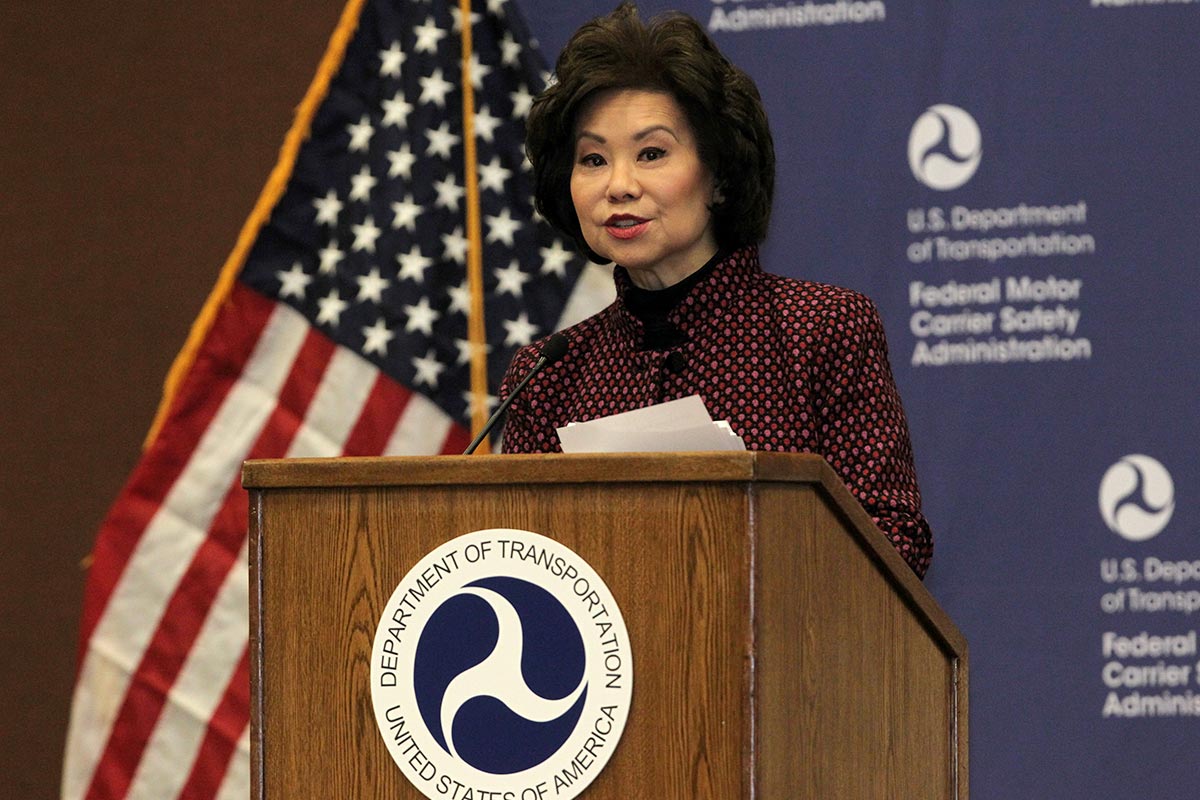Senior Reporter
Crash Not Your Fault? FMCSA Says Soon It Won't Hurt Your CSA Score

LOUISVILLE, Ky. — Beginning in August, the Federal Motor Carrier Safety Administration plans to make permanent a demonstration program that allows truck crashes in which the driver was not at fault to be listed as “not preventable” in Compliance, Safety, Accountability program scores.
“Based on positive feedback from industry stakeholders, the department will propose to make this demonstration program permanent,” Transportation Secretary Elaine Chao said in a March 29 speech at the 2019 Mid-America Trucking Show here. Chao noted that DOT had launched its Crash Preventability Demonstration Project on Aug. 1, 2017 for a two-year run that will conclude at the end of July.
A spokesman for the Federal Motor Carrier Safety Administration told Transport Topics that the demonstration program can be made permanent without a formal rulemaking.
The program currently classifies a crash as “not preventable” on a carrier’s Safety Measurement System profile in instances where the carrier is not at fault. However, before that determination can be made, a carrier must submit a request for data review through the agency’s DataQs system, attaching documentation that establishes the carrier could not have avoided the crash.

Horvath
“We are encouraged that the agency is looking at extending this program,” Daniel Horvath, director of safety policy for American Trucking Associations, told TT. “Crash preventability has been something that carriers have wanted for years. We’re also looking forward to working with FMCSA on the potential for expanding the types of crashes that can be DataQ-ed.” Currently there are only eight categories of crashes that can be challenged.
Prior to the demonstration project, fatal crashes listed on a carrier’s safety profile did not contain information on whether the carrier was at fault in the crash. Under the demonstration program, if a crash is found to be not preventable, a carrier’s private Crash Indicator Behavioral Analysis Safety Improvement Category, or BASIC, score would be recalculated with the crash omitted. BASIC scores underpin carrier ratings in the CSA program.
Under the demonstration program, to be considered for a “not preventable” rating, a crash must have resulted in a fatality, bodily injuries requiring immediate medical treatment away from the scene of the crash, or a vehicle being towed from the scene of a crash.
There are eight types of crashes that would be automatically eligible for a review. They include a crash in which a commercial motor vehicle is struck by a motorist driving under the influence, struck by a motorist driving in the wrong direction, struck in the rear, or being struck when the commercial motor vehicle is legally stopped or parked.
Other crashes that can be reviewed include those in which an individual attempts to commit suicide by stepping or driving in front of a CMV, a crash that damages a CMV after striking an animal in the roadway, a crash in which a CMV is struck by objects such as falling trees or rocks and instances in which a vehicle is struck by cargo or equipment from another vehicle.

Chao addresses a session at the Mid-America Trucking Show. (John Sommers II for TT)
However, Chao said that the agency will review other possible crash scenarios to possibly expand the current eight categories.
“Studies show that crash involvement is a strong indicator of future crash risk,” said an agency program overview. “The Crash Preventability Demonstration Program allows FMCSA to gather data to examine the feasibility, costs, and benefits of making crash preventability determinations on certain crash types. FMCSA will use the information from the program to evaluate if these preventability determinations improve the Agency’s ability to identify the highest-risk motor carriers.”
The demonstration project was an about-face for the agency. Despite longtime pressure from the trucking industry, FMCSA concluded in a study made public in January 2015 that it did not have a foolproof path to follow for quickly assessing fault in crashes and then using those judgments to predict future risk among trucking companies.
At the time, the agency said it examined nearly 11,000 police reports on accidents involving trucks and buses, and found discrepancies among the reports and no clear way to use fault assessment to produce a superior model for predicting future crashes as part of the CSA program.
Originally, the agency was planning in 2012 to implement a much-anticipated CSA program process that would have allowed carriers to seek an accountability review of crashes that went on their safety records. However, in March 2012, then-FMCSA Administrator Anne Ferro announced that the agency would delay “until further notice” its plans to use police accident reports as the basis for fault determination.
At the time, Ferro said the agency and then-Transportation Secretary Ray LaHood had received feedback from a few public interest groups raising questions about the “reliability” of police accident reports as the primary basis for the crash accountability determination process.




